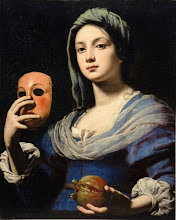Shri Nimbarka is a philosopher saint from the 13th or 14th century AD, who is believed to be an incarnation of the Sudarshana Chakra (discus) of Lord Vishnu. He was born in the region of India now known as Andhra Pradesh, and taught the philosophy of Dvaitadvaita - duality and non-duality at the same time.
To illustrate this principle he used the analogy of a snake in a coiled state. The coil is different to the snake yet it consists of the snake. The myriad forms that we see in the world are different to the Self/Brahman and yet they consist of the Self. So in one sense, world and Self are different, but in another sense they are one and the same.
The god Brahma, disguised as a renunciant, once visited Shri Nimbarka. When they had finished discussing philosophy, the renunciant got up to take leave but Nimbarka told him that he should stay and accept a meal. Lord Brahma replied that the sun had already set, and it was against the rules of ascetics for a renunciant to eat after sunset. Nimbarka did not want to break the rules of hospitality, neither did he want his guest to break the rules of asceticism, so he placed some of his radiance in a neem tree where it shone as brightly as the sun, making a day of night. Lord Brahma was pleased with the saint, and gave him the name Nimbarka, meaning sun in the neem tree.




















No comments:
Post a Comment